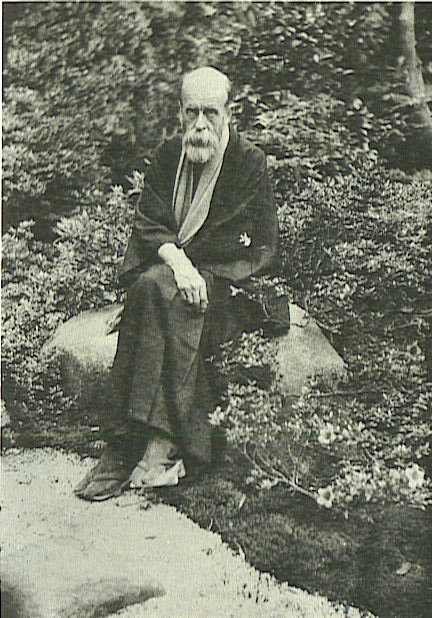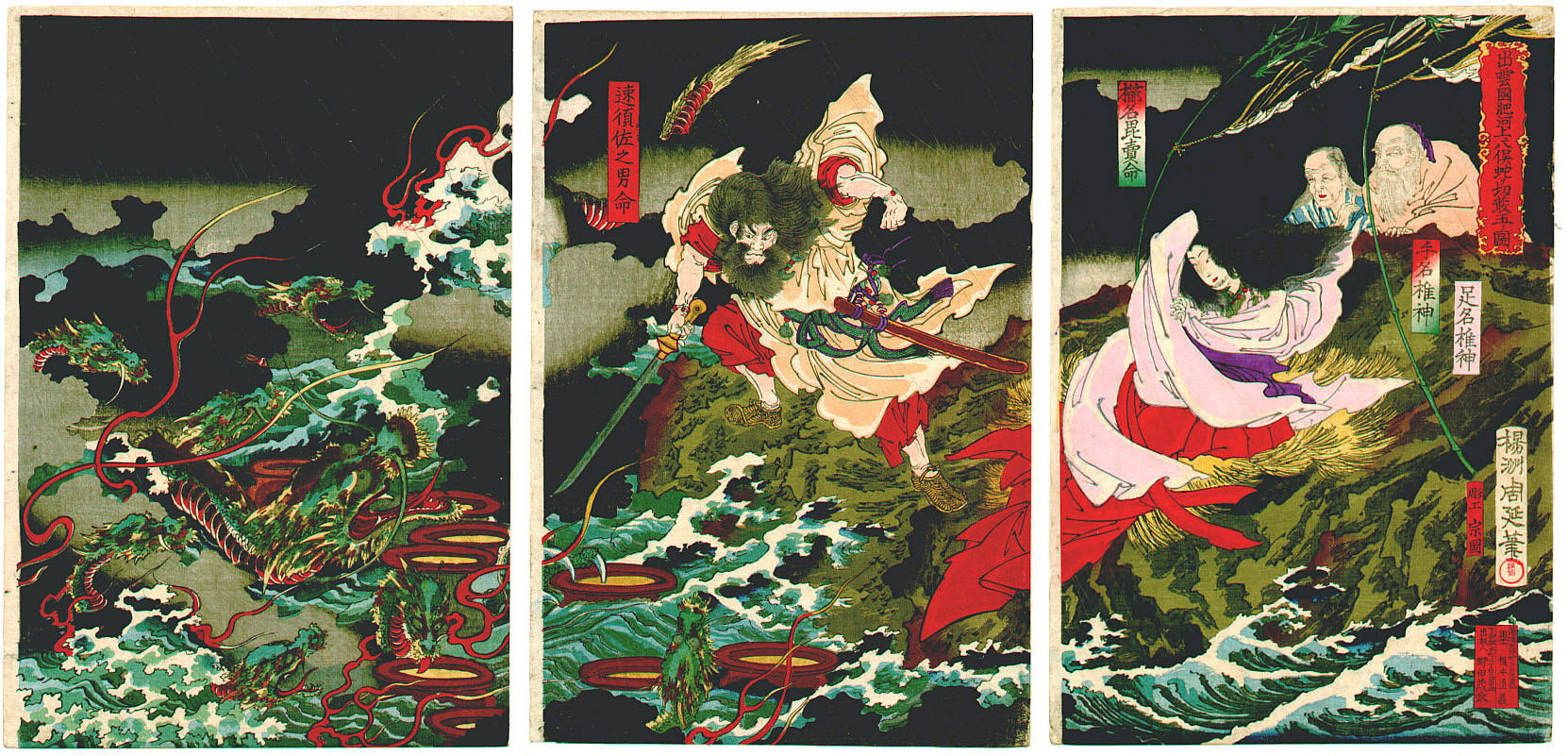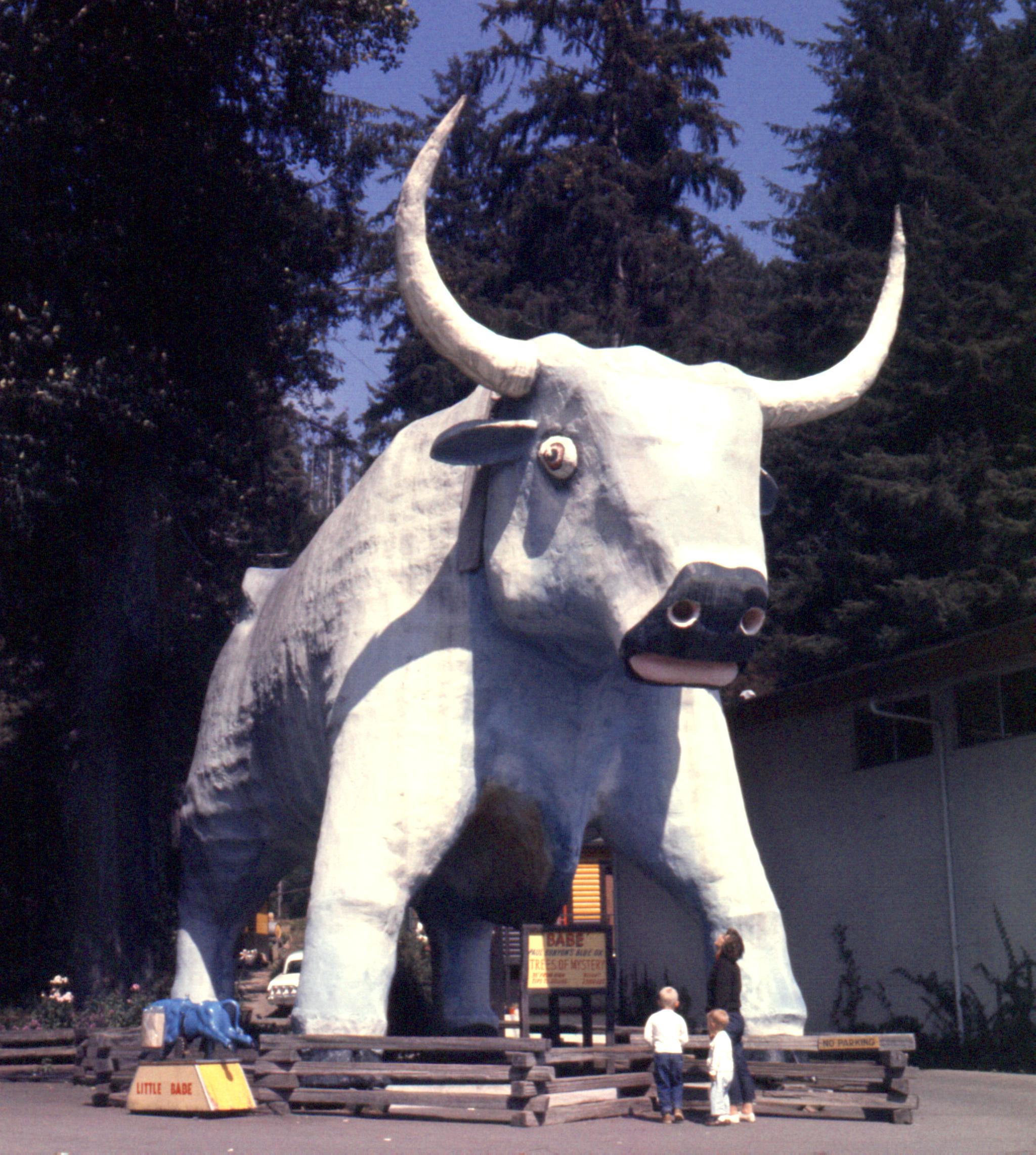|
Emperor Keikō
, also known as and , was the 12th legendary Emperor of Japan, according to the traditional order of succession. Both the ''Kojiki'', and the ''Nihon Shoki'' (collectively known as the ''Kiki'') record events that took place during Keikō's alleged lifetime. Keikō was recorded as being an exceptionally tall emperor who had a very large family. During his reign he sought to expand territorial control through conquest of local tribes. He had a very important son named "Prince Ōsu" (Yamato Takeru), who was in possession of the Kusanagi when he died. This treasure was later moved to Atsuta Shrine, and is now a part of the Imperial Regalia of Japan. There is a possibility that Keikō actually lived or reigned in the 4th century AD rather than the 1st, but more information is needed to confirm this view. Keikō's reign is conventionally considered to have been from 71 to 130 AD. During his alleged lifetime, he fathered at least 80 children with two chief wives (empress) and nine con ... [...More Info...] [...Related Items...] OR: [Wikipedia] [Google] [Baidu] |
Emperor Of Japan
The Emperor of Japan is the monarch and the head of the Imperial House of Japan, Imperial Family of Japan. Under the Constitution of Japan, he is defined as the symbol of the Japanese state and the unity of the Japanese people, and his position is derived from "the will of the people with whom resides sovereign power". Imperial Household Law governs the line of Succession to the Japanese throne, imperial succession. The emperor is sovereign immunity, immune from prosecution by the Supreme Court of Japan. He is also the head of the Shinto religion. In Japanese language, Japanese, the emperor is called , literally "Emperor of heaven or "Heavenly Sovereign". The Japanese Shinto religion holds him to be the direct descendant of the sun goddess Amaterasu. The emperor is also the head of all national Orders, decorations, and medals of Japan, Japanese orders, decorations, medals, and awards. In English, the use of the term for the emperor was once common but is now considered obsolete ... [...More Info...] [...Related Items...] OR: [Wikipedia] [Google] [Baidu] |
Richard Ponsonby-Fane
Richard Arthur Brabazon Ponsonby-Fane (8 January 1878 – 10 December 1937) was a British academic, author, specialist of Shinto and Japanologist. Early years Richard Arthur Brabazon Ponsonby was born at Gravesend on the south bank of the Thames in Kent, England to John Henry and Florence Ponsonby. His boyhood was spent in the family home in London and at the Somerset country home, Brympton d'Evercy, of his grandfather, Spencer Ponsonby-Fane."A Biographical sketch of Dr. R. Ponsonby-Fane," ''Studies in Shinto and Shrines,'' p. 517. Ponsonby was educated at Harrow School. He added "Fane" to his own name when he inherited Brympton d'Evercy in 1916 after the deaths of both his grandfather and father. Career In 1896, Ponsonby traveled to Cape Town to serve as Private Secretary to the Governor of the British Cape Colony.Ponsonby-Fane, p. 518. For the next two decades, his career in the British Empire's colonial governments spanned the globe. He worked closely with a number of c ... [...More Info...] [...Related Items...] OR: [Wikipedia] [Google] [Baidu] |
Kusanagi
is a legendary Japanese sword and one of three Imperial Regalia of Japan. It was originally called , but its name was later changed to the more popular ("Grass-Cutting Sword"). In folklore, the sword represents the virtue of valor. Legends The history of the extends into legend. According to , the god Susanoo encountered a grieving family of ("gods of the land") headed by in Izumo Province. When Susanoo inquired of Ashinazuchi, he told him that his family was being terrorized by the fearsome Yamata no Orochi, an eight-headed serpent of Koshi, who had consumed seven of the family's eight daughters and that the creature was coming for his final daughter, . Susanoo investigated the creature, and after an abortive encounter he returned with a plan to defeat it. In return, he asked for Kushinada-hime's hand in marriage, which was agreed. Transforming her temporarily into a comb (one interpreter reads this section as "using a comb he turns into asquerades asKushinada-hime") to ... [...More Info...] [...Related Items...] OR: [Wikipedia] [Google] [Baidu] |
Izumo Province
was an old province of Japan which today consists of the eastern part of Shimane Prefecture. It was sometimes called . The province is in the Chūgoku region. History During the early Kofun period (3rd century) this region was independent and constructed rectangular tumuli. But in the fourth century this region saw the construction of rectangular and key shaped tumuli. During the 6th or 7th century it was absorbed due to the expansion of the state of Yamato, within which it assumed the role of a sacerdotal domain. Today, the Izumo Shrine constitutes (as does the Grand Shrine of Ise) one of the most important sacred places of Shinto: it is dedicated to ''kami'', especially to Ōkuninushi (''Ō-kuni-nushi-no-mikoto''), mythical progeny of Susanoo and all the clans of Izumo. The mythological mother of Japan, the goddess Izanami, is said to be buried on Mt. Hiba, at the border of the old provinces of Izumo and Hōki, near modern-day Yasugi of Shimane Prefecture. By the Sengoku ... [...More Info...] [...Related Items...] OR: [Wikipedia] [Google] [Baidu] |
Kyūshū
is the third-largest island of Japan's five main islands and the most southerly of the four largest islands ( i.e. excluding Okinawa). In the past, it has been known as , and . The historical regional name referred to Kyushu and its surrounding islands. Kyushu has a land area of and a population of 14,311,224 in 2018. In the 8th-century Taihō Code reforms, Dazaifu was established as a special administrative term for the region. Geography The island is mountainous, and Japan's most active volcano, Mount Aso at , is on Kyushu. There are many other signs of tectonic activity, including numerous areas of hot springs. The most famous of these are in Beppu, on the east shore, and around Mt. Aso in central Kyushu. The island is separated from Honshu by the Kanmon Straits. Being the nearest island to the Asian continent, historically it is the gateway to Japan. The total area is which makes it the 37th largest island in the world. It's slightly larger than Taiwan island . ... [...More Info...] [...Related Items...] OR: [Wikipedia] [Google] [Baidu] |
Kikuchi Dairoku
Baron was a Japanese mathematician, educator, and education administrator during the Meiji era. Biography Early life and family Kikuchi was born in Edo (present-day Tokyo), as the second son of Mitsukuri Shūhei, a professor at Bansho Shirabesho, himself the adopted son of Mitsukuri Gempo, a Shogunate professor. The Mitsukuri family had distinguished themselves as scholars, and were at the centre of Japan's educational system in the Meiji era. His grandfather had been a student of Dutch studies ("rangaku"). Kikuchi Dairoku changed his surname from Mitsukuri to Kikuchi upon succeeding as the heir to his father's original family; the requisite legal procedures were completed in 1877. Education After attending the ''Bansho Shirabesho'', the Shogunal institute for western studies, he was sent to Great Britain, in 1866, at age 11, the youngest of a group of Japanese sent by the Tokugawa shogunate to the University College School, on the advice of the then British foreign mi ... [...More Info...] [...Related Items...] OR: [Wikipedia] [Google] [Baidu] |
Francis Brinkley
Francis Brinkley (30 December 1841 – 12 October 1912) was an Anglo-Irish newspaper owner, editor and scholar who resided in Meiji period Japan for over 40 years, where he was the author of numerous books on Japanese culture, art and architecture and an English-Japanese Dictionary. He was also known as Frank Brinkley or as Captain Francis Brinkley and was the great uncle of Cyril Connolly. Early life In 1841, Frank Brinkley was born at Parsonstown House, Co. Meath, the thirteenth and youngest child of Matthew Brinkley (1797–1855) J.P., of Parsonstown and his wife Harriet Graves (1800–1855). His paternal grandfather, John Brinkley, was the last Bishop of Cloyne and the first Royal Astronomer of Ireland, while his maternal grandfather, Richard Graves, was also a Senior Fellow of Trinity College and the Dean of Ardagh. One of Brinkley's sisters, Jane (Brinkley) Vernon of Clontarf Castle, was the grandmother of Cyril Connolly. Another sister, Anna, became the Dowager Countess ... [...More Info...] [...Related Items...] OR: [Wikipedia] [Google] [Baidu] |
Delmer Brown
Delmer Myers Brown (November 20, 1909November 9, 2011) was an American academic, historian, writer, translator and Japanologist. He was a professor of Japanese history at the University of California at Berkeley. Early life, education, and personal life Brown was born on November 20, 1909 in Harrisonville, Missouri and grew up in Kansas City, Missouri. In 1925, he moved with his family to Santa Ana, California. He attended Santa Ana Junior College and then Stanford University, where he graduated with a degree in history in 1932. Instead of going to law school, as originally planned, Brown took a position teaching English at a prestigious Japanese Imperial "Higher School" in Kanazawa, Ishikawa, Japan. It was there that he met and married Mary Nelson Logan in 1934. During World War II, Brown served as an intelligence officer in the U.S. Navy. Brown earned his Ph.D. in Japanese history from Stanford in 1946. [...More Info...] [...Related Items...] OR: [Wikipedia] [Google] [Baidu] |
Tall Tale
A tall tale is a story with unbelievable elements, related as if it were true and factual. Some tall tales are exaggerations of actual events, for example fish stories ("the fish that got away") such as, "That fish was so big, why I tell ya', it nearly sank the boat when I pulled it in!" Other tall tales are completely fictional tales set in a familiar setting, such as the European countryside, the American frontier, the Canadian Northwest, the Australian frontier, or the beginning of the Industrial Revolution. Events are often told in a way that makes the narrator seem to have been a part of the story; the tone is generally good-natured. Legends are differentiated from tall tales primarily by age; many legends exaggerate the exploits of their heroes, but in tall tales the exaggeration looms large, to the extent of dominating the story. United States The tall tale is a fundamental element of American folk literature. The tall tale's origins are seen in the bragging contests that ... [...More Info...] [...Related Items...] OR: [Wikipedia] [Google] [Baidu] |
Kojiki
The , also sometimes read as or , is an early Japanese chronicle of myths, legends, hymns, genealogies, oral traditions, and semi-historical accounts down to 641 concerning the origin of the Japanese archipelago, the , and the Japanese imperial line. It is claimed in its preface to have been composed by Ō no Yasumaro at the request of Empress Genmei in the early 8th century (711–712), and thus is usually considered to be the oldest extant literary work in Japan. The myths contained in the as well as the are part of the inspiration behind many practices. Later, they were incorporated into Shinto practices such as the purification ritual. Composition It is believed that the compilation of various genealogical and anecdotal histories of the imperial (Yamato) court and prominent clans began during the reigns of Emperors Keitai and Kinmei in the 6th century, with the first concerted effort at historical compilation of which we have record being the one made in 620 under ... [...More Info...] [...Related Items...] OR: [Wikipedia] [Google] [Baidu] |
Pseudohistory
Pseudohistory is a form of pseudoscholarship that attempts to distort or misrepresent the historical record, often by employing methods resembling those used in scholarly historical research. The related term cryptohistory is applied to pseudohistory derived from the superstitions intrinsic to occultism. Pseudohistory is related to pseudoscience and pseudoarchaeology, and usage of the terms may occasionally overlap. Although pseudohistory comes in many forms, scholars have identified many features that tend to be common in pseudohistorical works; one example is that the use of pseudohistory is almost always motivated by a contemporary political, religious, or personal agenda. Pseudohistory also frequently presents sensational claims or a big lie about historical facts which would require unwarranted revision of the historical record. A common feature of pseudohistory is an underlying premise that there is a conspiracy among scholars to promote so-called "mainstream history" over ... [...More Info...] [...Related Items...] OR: [Wikipedia] [Google] [Baidu] |
01.jpg)




.png)
